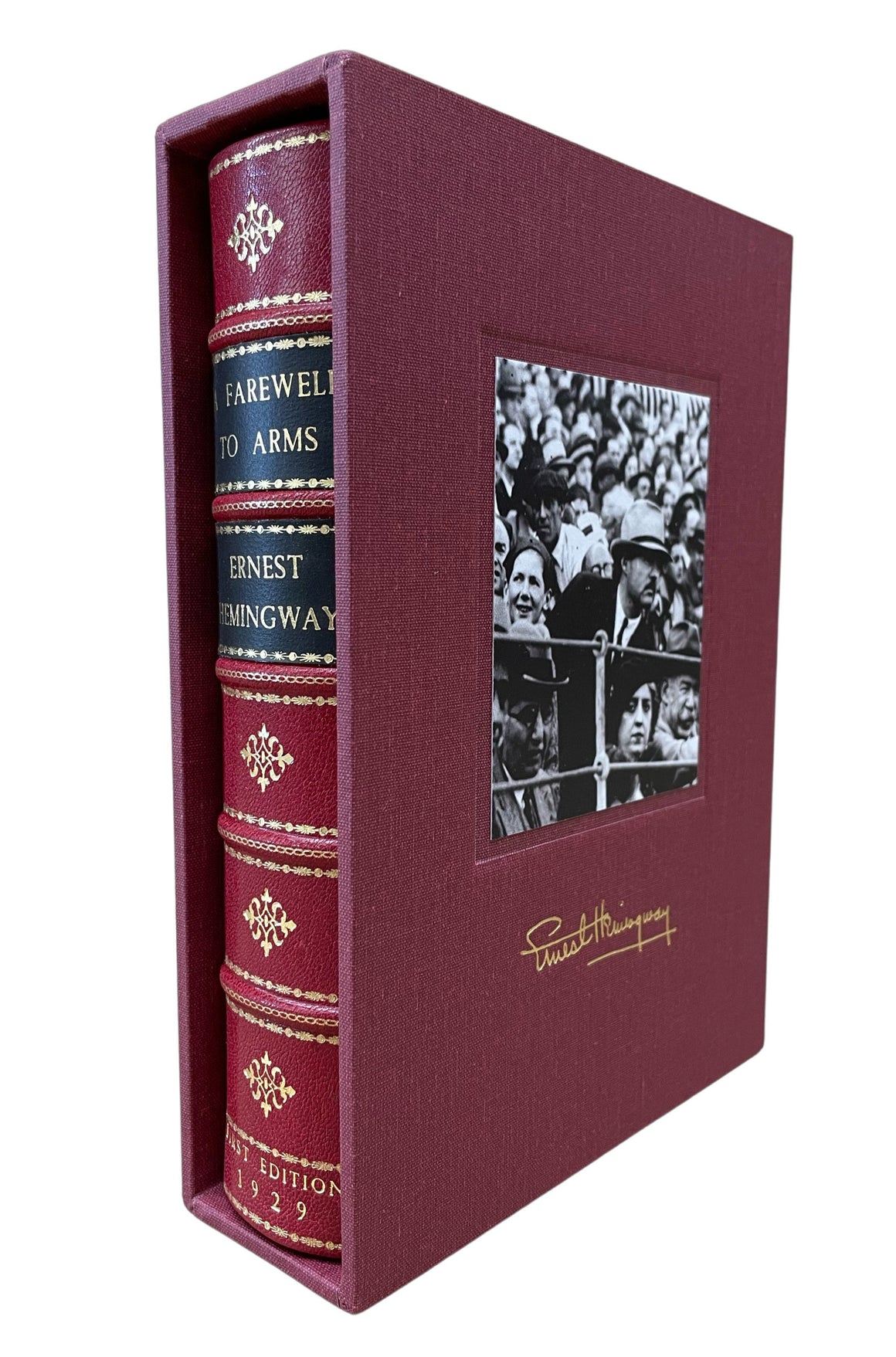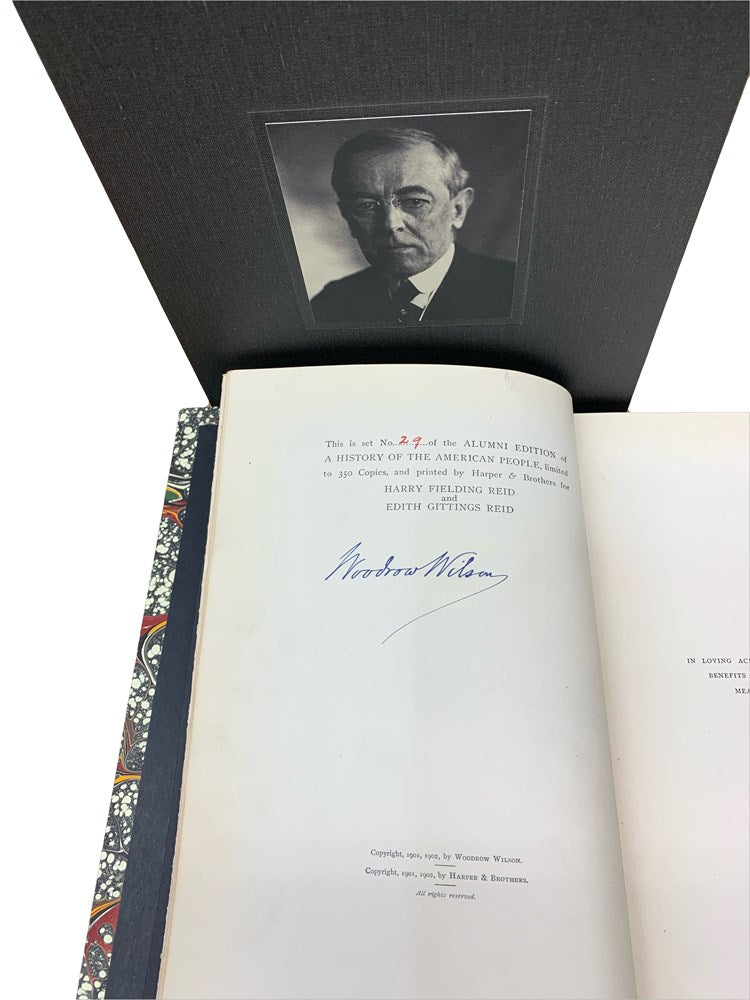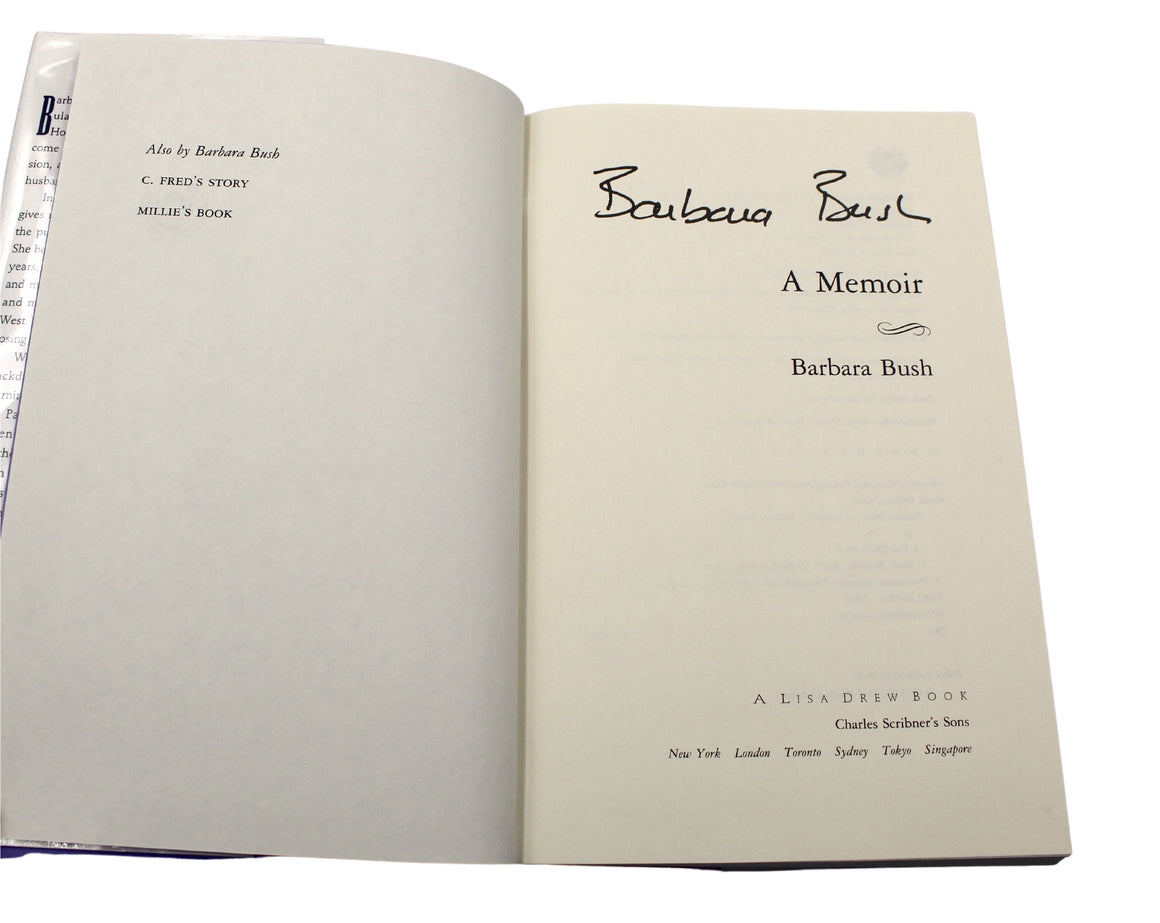A Farewell to Arms by Ernest Hemingway, First Trade Edition, in First State Dust Jacket, 1929
$7,250.00
Hemingway, Ernest. A Farewell to Arms. New York: Charles Scribner's Sons, 1929. First trade edition, first issue. In the original first-state dust jacket and publisher’s black cloth boards. Presented in a new archival ¼ leather and cloth clamshell case, with raised bands, gilt tooling, and titles to the spine.
Presented is a first trade edition, first issue of Ernest Hemingway’s A Farewell to Arms. The book was published by Charles Scribner’s Sons in New York, in September of 1929. This first printing is presented with its original first issue dust jacket. The dust jacket, as designed by Cleonike Damianakes Wilkins, is considered by many to be one of the greatest of the 20th century and rivals even The Great Gatsby in its collectibility.
Set during World War I, A Farewell to Arms tells the story of a young American Lieutenant serving as an ambulance driver in Italy struggling through love and war. The story is told through first person narration detailing many aspects of war that would have been very familiar to readers at the time, as the book was published only 11 years after the 1918 armistice. The simple, direct tone his character uses when giving his unromanticized account of the war later defined Hemingway’s writing style.
A Farewell to Arms is loosely based on Hemingway’s own experiences. The author briefly served overseas as an ambulance driver in the Italian Army, sustained injuries, and met a nurse who he eventually proposed marriage to but was declined. The novel’s post-war disillusionist subject assigned Hemingway to the “Lost Generation” of Modernist artists.
A Farewell to Arms was Hemingway’s most successful publishing venture to date. Charles Scribner's Sons issued seven impressions of the novel in the short time between September and December of 1929, with over 100,000 volumes sold. The novel secured Hemingway’s place as a popular American author and became his first bestselling book.
Ernest Hemingway (1899-1961) was an American author and journalist. His distinctive writing style, characterized by economy of words and dry understatement, strongly influenced 20th-century fiction, as did his life of adventure and his public image. Hemingway produced most of his work between the mid-1920s and the mid-1950s, winning the Nobel Prize in Literature in 1954. Hemingway published seven novels, six short story collections, and two non-fiction works during his lifetime; a further three novels, four collections of short stories, and three non-fiction works were published posthumously. Many of his works are now considered classics of American literature.
The book’s striking dust jacket design was illustrated by the artist Cleonike Damianakes Wilkins, who worked under the pen name of Cleon. Wilkins was known for her distinctive fusion of Art Deco and Hellenistic styles. She designed the dust jackets for Hemingway’s earlier The Sun Also Rises in 1926 and his later publication In Our Time in 1930, as well as Conrad Aiken’s Great Circle, F. Scott Fitzgerald’s All the Sad Young Men,and Zelda Fitzgerald’s Save Me the Waltz.
Wilkins was chosen by Hemingway’s celebrated editor at Scribner’s, Maxwell Perkins. In order to differentiate Hemingway’s tale from other, competing WWI novels on the bookshop shelves, Perkins sought to widen its appeal through the dust jacket. The resulting design was Wilkins’ interpretation of Sandro Botticelli’s epic oil painting “Venus and Mars,” and the triumph of love over war. Her classical figures appealed to a female audience and allayed the more shocking elements and language in Hemingway’s blunt story of war.
CONDITION:
Very good condition overall. 8vo. Original first issue dust jacket with “Katharine Barclay” misspelled for Catherine Barkley on front flap. Dust jacket is price-clipped. Small repairs to top of front panel and spine of dust jacket. Creases at top and bottom. Publisher’s black cloth boards with gilt printed labels to upper cover and spine. Interior pages very healthy, without marks or tears. First trade edition, first issue, with Scribner’s seal on copyright and without legal disclaimer. Hanneman A8a; Connolly, 60.
Book is presented with a new archival clamshell in gorgeous cream quarter leather and blue cloth, with raised bands, gilt lettering, and gilt tooling to the spine, and an inlaid photograph of Hemingway on the front.
Book Dimensions: 7 3/4" H x 5 3/4" W x 1 1/2" D. Clamshell Dimensions: 8 3/4" H x 6 3/4" W x 2 1/4" D.
Share:
Related Items
Antiques
American-Made Goods
News & Updates
Sign up to get the latest on sales, new releases and more …
© 2024 The Great Republic. All Right Reserved.

















